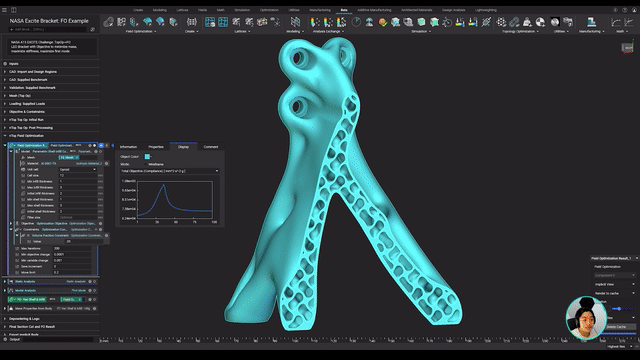Lightweighting a bracket for the NASA EXCITE Challenge

video: Lightweighting a bracket for the NASA EXCITE Challenge
Published on June 20, 2023
Applications
Key Software Capabilities
- Field Optimization
- Topology optimization
- Implicit Interop
The automotive and aerospace industries have used hollow structures for decades to create lightweight but stiff parts. With additive manufacturing, we can take that concept to the next level and create hollow parts with a variable shell thickness and lattice infills that result in even lighter high-performance parts.
Today’s design problem for the A15 benchmark comes from the NASA EXCITE mission. The goal was to minimize the bracket’s weight and make it as stiff as possible while withstanding the forces applied during flight.
In this video, Yuki Okada, Technical Marketing Specialist at nTop, shows you how to set up and run a Field Optimization, a new generative design technology that allows complex geometries, such as lattices, to be optimized at every point. He will run through a topology optimization and Field Optimization setup to get a final optimized part, which will then be exported using Implicit Interop and our nTop Plugin for EOSPRINT.
Watch and learn how to:
- Set up topology optimization and Field Optimization
- Understand the Field Optimization results
- Export the final part using Implicit Interop
Related content
- VIDEO
nTop Siemens Energy at CDFAM NYC 2024

- CASE STUDY
Reducing weight to help win and withstand the rigors of a 24 hour Le Mans race

- ARTICLE
An nTop intern’s experience: Learning computational design and creating a lightweight drone

- VIDEO
nTop CDS 2024: How COBRA Golf created the LIMIT3D irons

- CASE STUDY
Cobra Golf designed their LIMIT3D irons 50% faster with nTop
